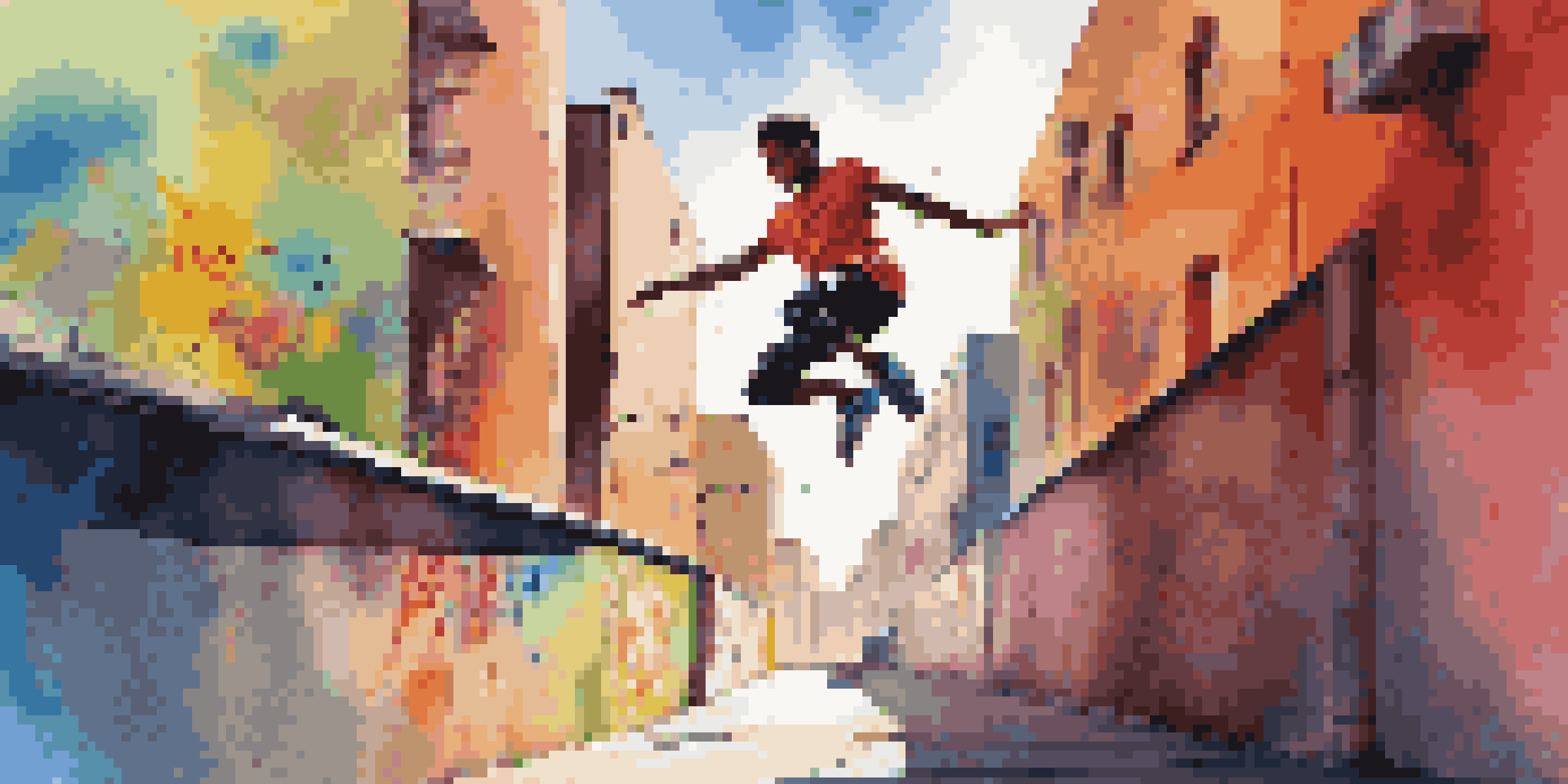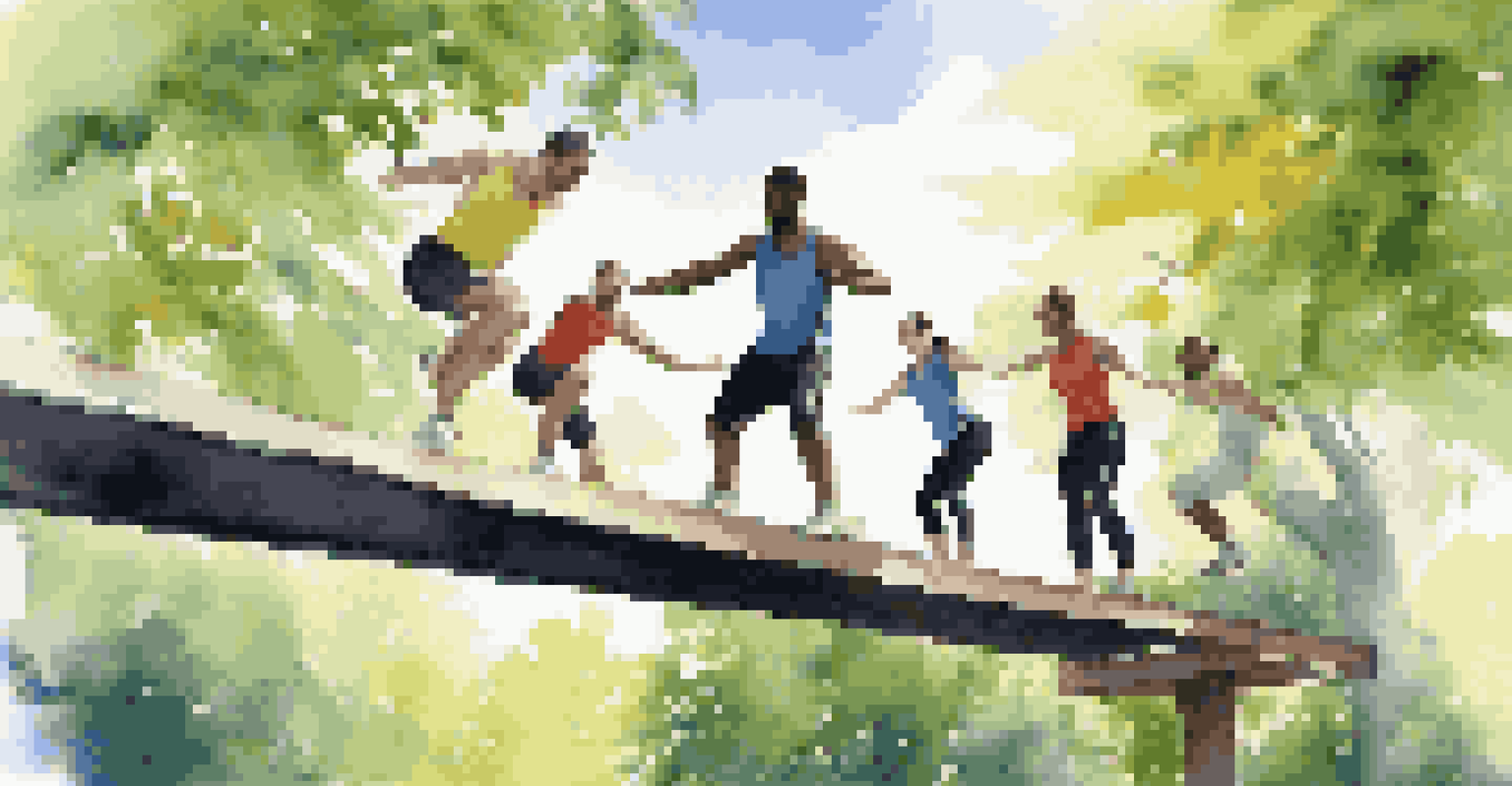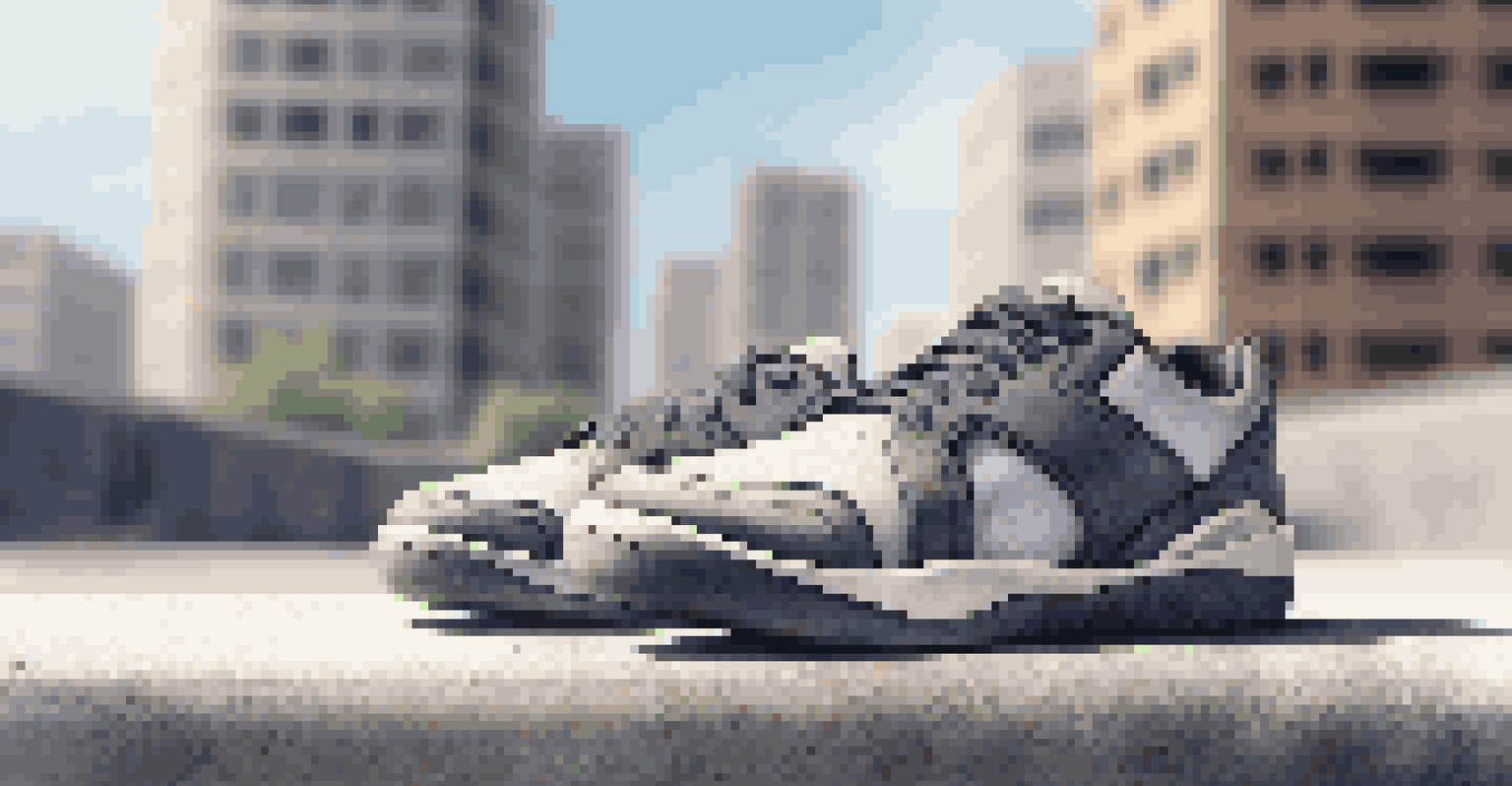Parkour Equipment: What You Really Need to Get Started

Understanding Parkour: A Brief Overview
Parkour is more than just an extreme sport; it's a way of moving through your environment with agility and creativity. Originating from military obstacle course training, it emphasizes fluid movement, efficiency, and overcoming obstacles. While it can look daunting, anyone can learn parkour with the right mindset and practice.
The obstacles in life are not meant to stop you, they are meant to be conquered.
In essence, parkour is about adapting your body to navigate urban spaces or natural landscapes. It encourages you to see the world differently, transforming mundane structures into potential playgrounds. But before you leap into action, having the right equipment can make a big difference.
So, what do you really need to get started? Let's break down the essential gear that can enhance your training, keep you safe, and help you develop your skills.
Footwear: The Foundation of Your Parkour Gear
When it comes to parkour, your shoes are arguably the most crucial piece of equipment. A good pair of footwear provides the grip, support, and flexibility you need to perform various movements, from jumps to landings. Look for shoes that have a flat sole and excellent traction to help you maintain balance and stability.

Many parkour enthusiasts prefer shoes that are lightweight yet durable. Brands that offer minimalist designs often work well, allowing for a more natural feel while running and jumping. Remember, the right shoes can enhance your performance and reduce the risk of injury as you navigate through different terrains.
Essential Gear for Parkour Success
Having the right footwear, clothing, and protective gear is crucial for safety and performance in parkour.
Investing time in finding the perfect pair will pay off, literally and figuratively, as it sets the stage for your parkour journey. Don’t rush this decision; try on several options to find the best fit for your style and comfort.
Clothing: Comfort Meets Flexibility
Your choice of clothing is just as important as your footwear when practicing parkour. Opt for comfortable, breathable fabrics that allow for a full range of motion. Tight-fitting clothes can restrict movement, while overly baggy attire might get in the way during your training sessions.
It's not about the destination, it's about the journey.
Many parkour practitioners choose athletic wear made from moisture-wicking materials to keep them dry and comfortable. Look for items like fitted shorts or sweat-wicking t-shirts that won't hinder your movement. Layering can also be useful, especially in changing weather conditions.
Ultimately, the goal is to feel unrestricted and confident in your gear, allowing you to focus on your movements rather than your outfit. Find a style that resonates with you and enables you to express yourself while staying practical.
Protective Gear: Safety First
While parkour emphasizes agility and skill, it's essential not to overlook safety. Protective gear, such as knee pads and wrist guards, can greatly reduce the risk of injury during your training. These items provide cushioning and support during falls or landings, which is especially important for beginners.
Even though parkour encourages learning through trial and error, being prepared can make a big difference. Helmets can also be a good idea when practicing more advanced moves or working on height. Remember, it's better to be cautious and safe, especially when you're just starting out.
Community Support Enhances Learning
Joining local parkour groups or online communities can provide valuable guidance, motivation, and camaraderie.
Investing in protective gear can help you build confidence as you push your limits. As you progress and gain experience, you may find yourself relying on this gear less, but it's invaluable during your initial training phases.
Training Tools: Enhance Your Skills
In addition to your basic gear, certain training tools can help you hone your parkour skills. Items like foam blocks or crash pads can serve as a safe landing surface while you're practicing jumps or flips. These tools allow you to experiment with new moves without the fear of injury.
Another popular training aid is a balance beam or rail, which can help improve your precision and control. Practicing on these tools can simulate the challenges you'll face in real-world environments, preparing you for more complex movements.
Using these training tools effectively can speed up your learning process and build your confidence. Incorporating them into your routine can make practice sessions more enjoyable and productive.
Community Resources: Finding Support
Joining a parkour community can be incredibly beneficial as you start your journey. Many cities have local groups or clubs where enthusiasts gather to practice, share tips, and support each other. These communities often provide access to experienced practitioners who can offer guidance and mentorship.
Online forums and social media groups can also connect you with other parkour lovers. These platforms are fantastic for sharing experiences, learning new techniques, and even finding local training spots. Engaging with the community can keep you motivated and inspired.
Set Realistic Goals for Progress
Establishing achievable objectives helps track progress and fosters a positive learning experience in parkour.
Remember, parkour is as much about connection and collaboration as it is about individual skill. Embrace the support of those around you as you navigate your way through this exciting discipline.
Setting Realistic Goals: Your Parkour Journey
As with any new endeavor, setting realistic goals is crucial in your parkour journey. Whether it's mastering a specific move or simply feeling more comfortable with your surroundings, having clear objectives can guide your training. Start small and gradually increase the difficulty as your skills improve.
Documenting your progress, whether through a journal or video recordings, can provide motivation and insights into your development. Celebrating small victories along the way can keep your spirits high and drive you to tackle more challenging obstacles.

Remember, every expert was once a beginner. Embrace the learning process, and don't be discouraged by setbacks. With dedication and the right mindset, you'll be amazed at how quickly you can progress.
Conclusion: Ready, Set, Parkour!
As you embark on your parkour journey, remember that the right equipment and mindset can significantly impact your experience. From choosing the right footwear and clothing to incorporating protective gear and training tools, every piece of equipment plays a vital role in your development.
Engaging with a supportive community and setting realistic goals will further enhance your training. The world of parkour is inviting, and the possibilities are endless. With practice, you'll not only improve your physical abilities but also gain confidence and a new perspective on your environment.
So lace up those shoes, put on your gear, and get ready to leap into the world of parkour. The only limit is your imagination!